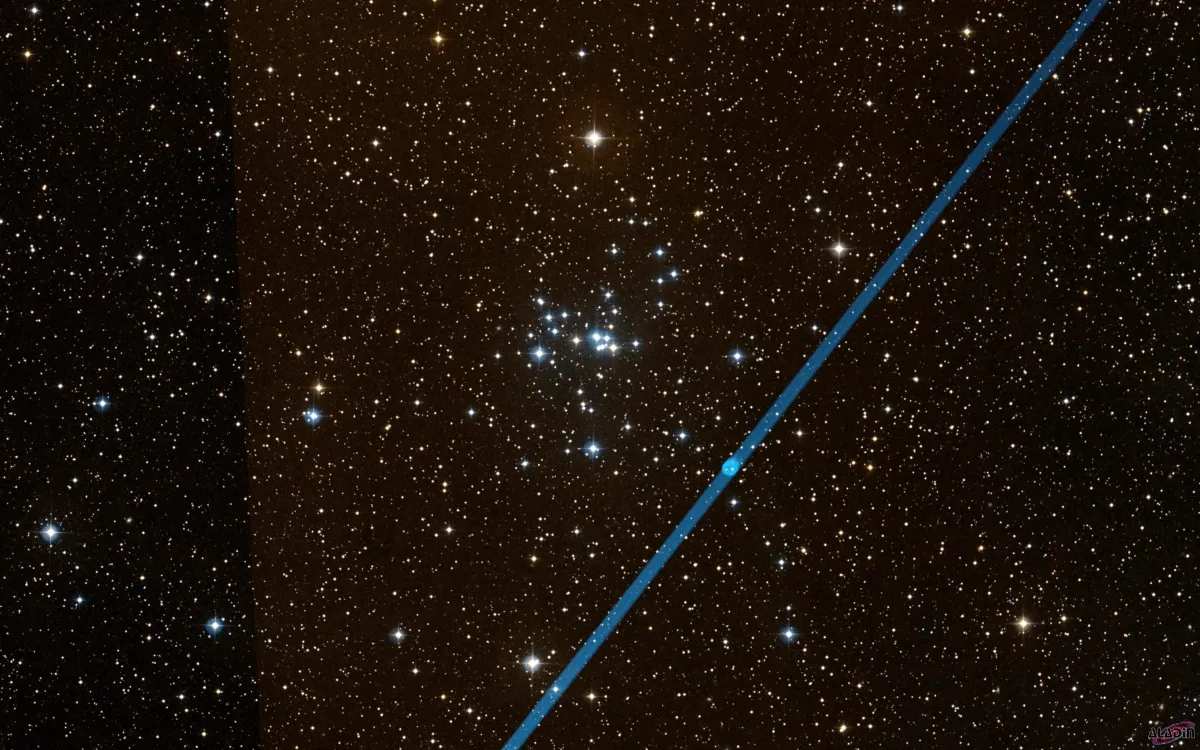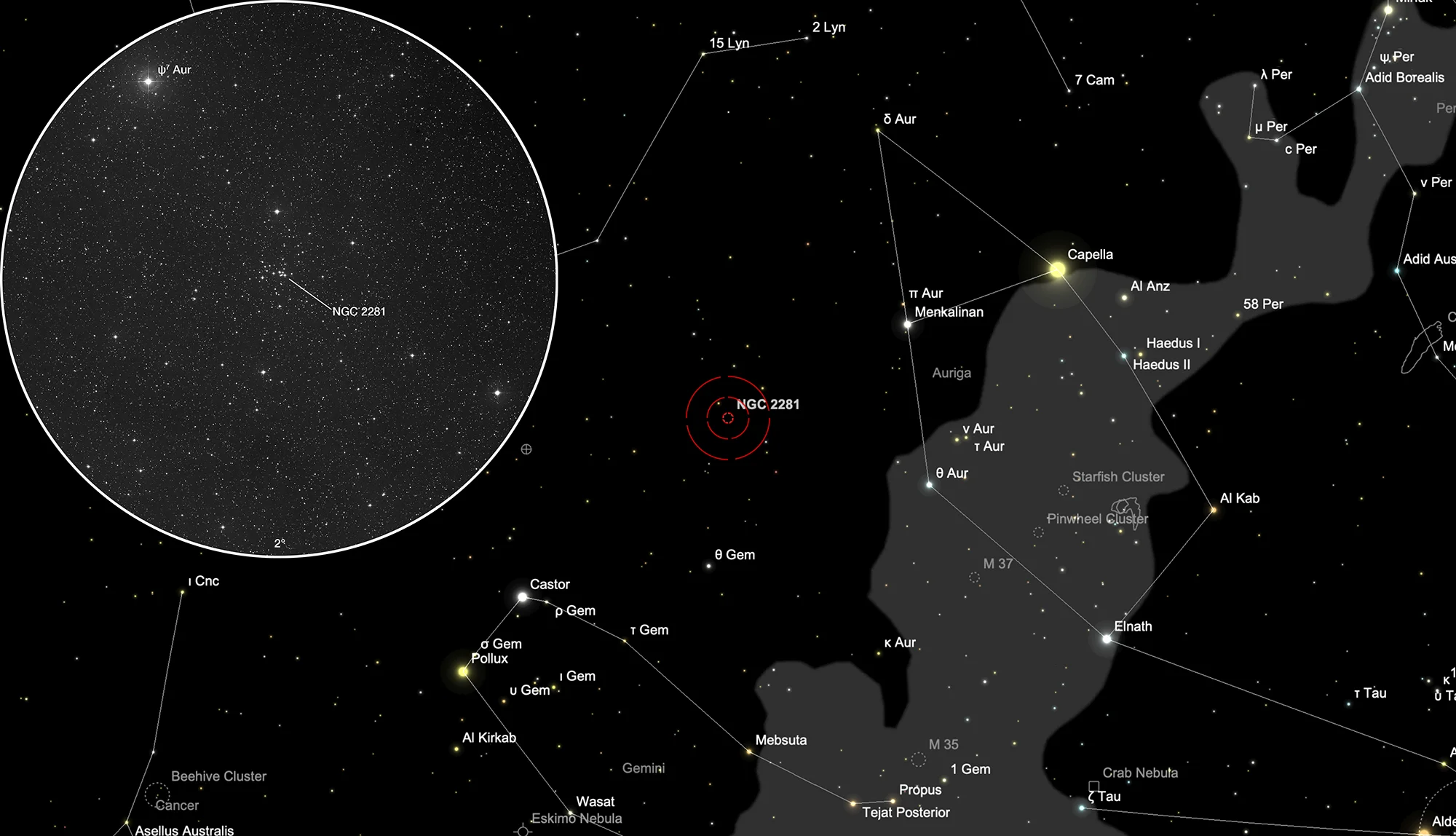Open Cluster NGC 2281

History
This open cluster was discovered by German-British astronomer William Herschel on 6 November 1782 during his third double star review using his 6.2-inch reflector. He listed it as the multiple star II 71 with published description: «Multiple. About 3/4 degree south of the 58th Aurigae, in a line parallel to β and θ. A cluster of stars containing a double star of the second, and one of the third class. That of the second very unequal. Both resolved. With 460, about 2½ diameter of large. Position 44° 36' north following; that of the third equal. Both resolved. With 227, above 20 stars in view. Distance 17'' 41'''. The two double stars are in the following side of a small small telescopic trapezium.» [734]
Herschel rediscovered the cluster again on 4 March 1788 during his sweeps with his 18.7-inch telescope. He listed it as VIII 71 and noted: «A cluster of coarsely scattered pretty large stars, pretty rich, the place is that of a double star of the third class.» [464]
Physical Properties
| Designation | NGC 2281 |
| Type | OCL (I3p) |
| Right Ascension (J2000.0) | 06h 48m 17.8s |
| Declination (J2000.0) | +41° 04' 44" |
| Diameter | 25 arcmin |
| Visual magnitude | 5.4 mag |
| Metric Distance | 0.558 kpc |
| Dreyer Description | Cl, pRi, vlC, st pL |
| Identification, Remarks | WH VIII 71; GC 1451; OCL 446 |
Finder Chart
The open cluster NGC 2281 can be found in the constellation Auriga. On 2 January it in opposition with the Sun and is therefore highest in the sky at local midnight.
